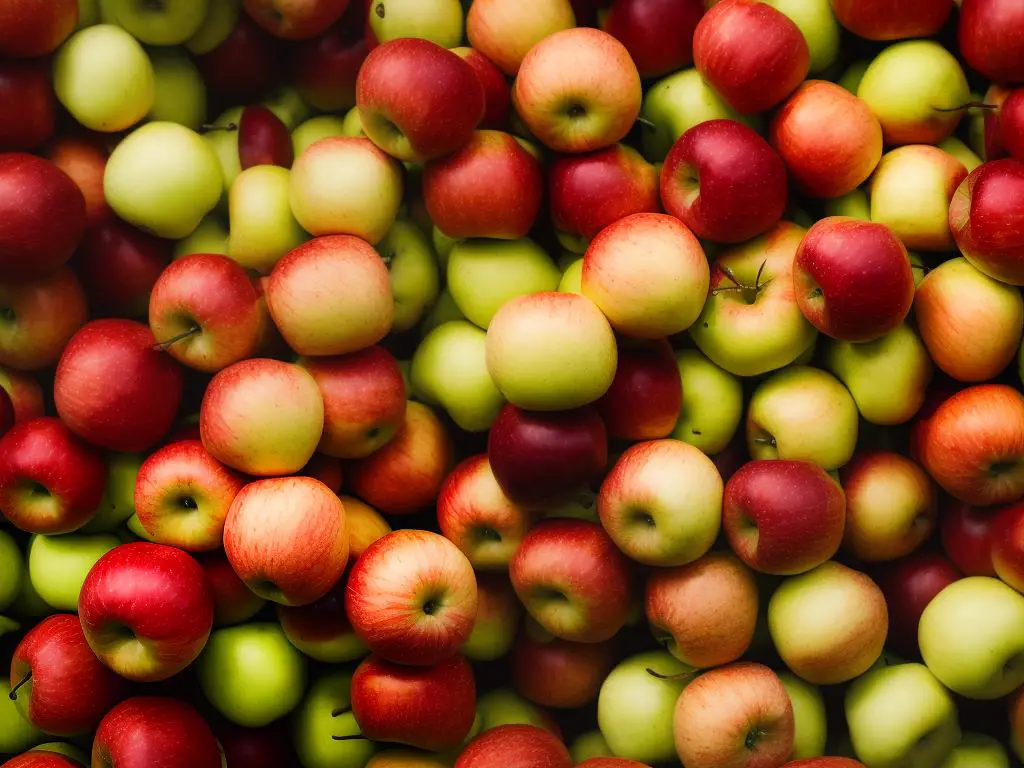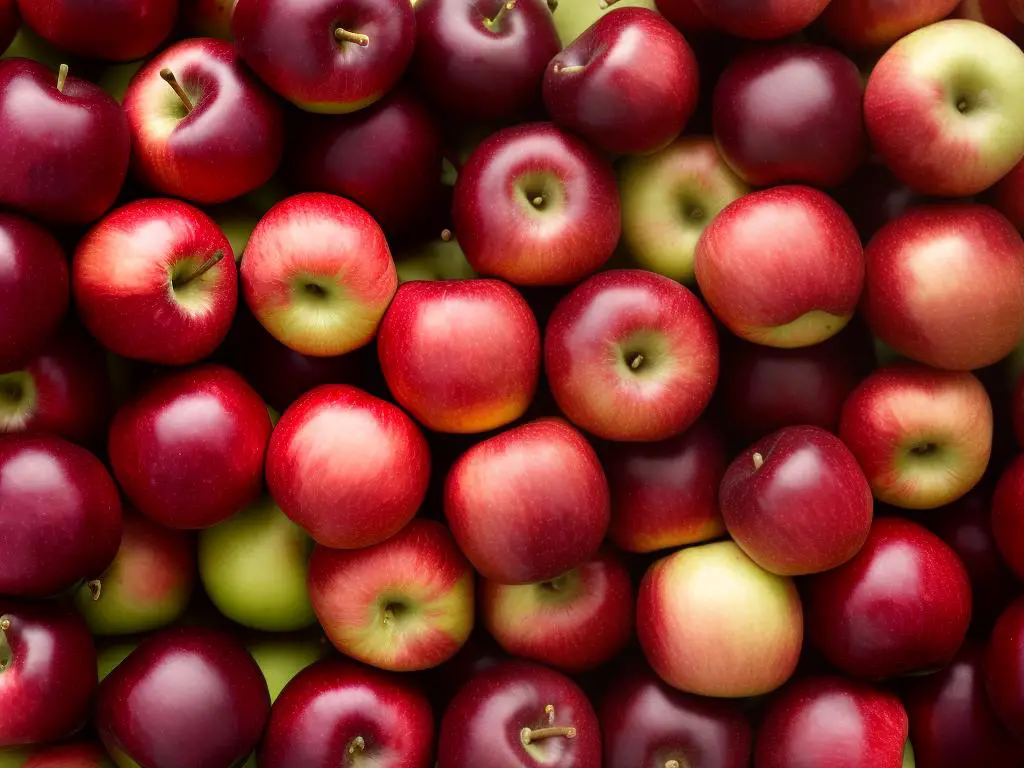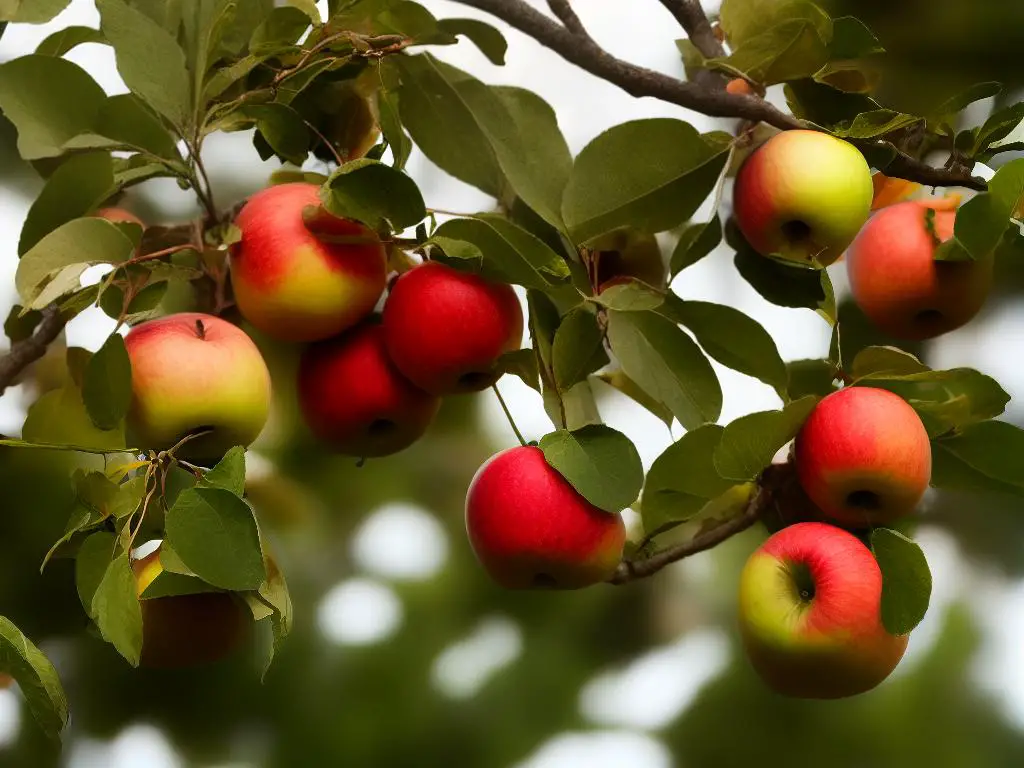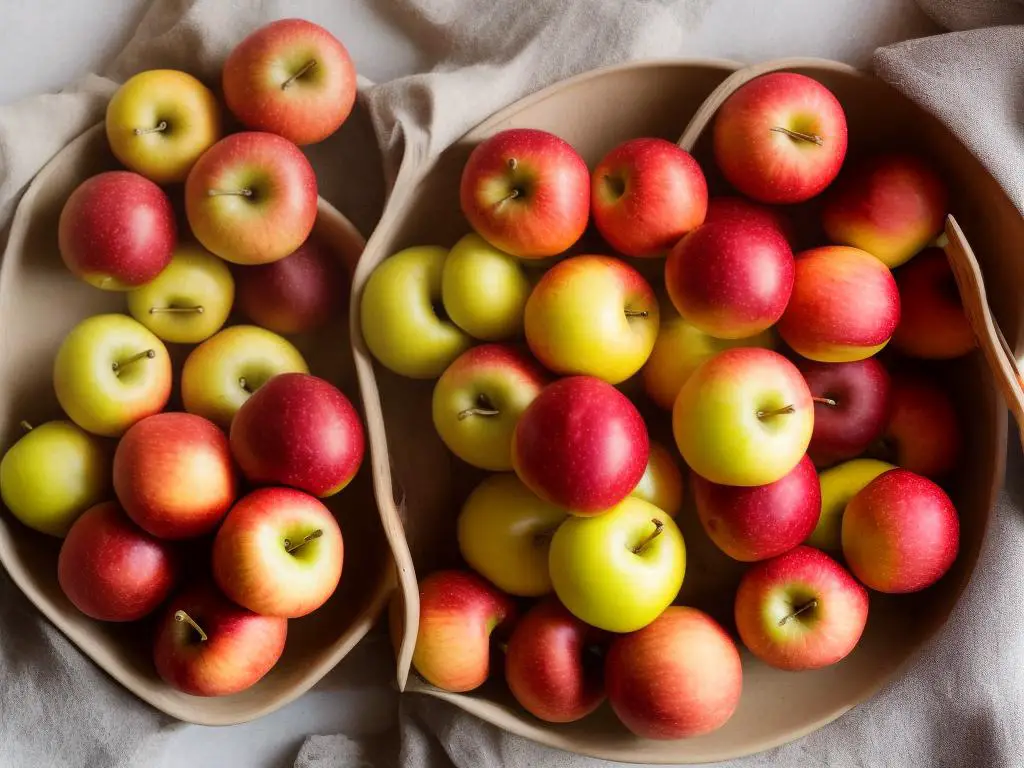Imagine biting into a juicy, tart apple, so delicious that the flavor lingers in your mouth for a while. That’s the Macoun apple for you, a fruit rich not just in taste, but history, uses, and health benefits as well. Since their discovery decades ago, Macoun apples have gradually but surely made their mark in the fruit world, becoming a household name in certain regions. Their sweet yet tart flavor paired with a peculiarly crisp texture sets them apart from their counterparts. While the history of Macoun apples lays the groundwork for their origin, understanding their characteristics, growing conditions, and uses proposes an enlightening path about their journey.
The Origin of Macoun Apples
The Birth of Macoun Apples: A Fruit with a Delightful History
Macoun apples owe their origin to the United States. Named after the famous Canadian horticulturist, W.T. Macoun, they were first developed in 1909. Their delicious taste and robust texture are a result of crossbreeding the Jersey Black and the McIntosh apples. This preferred child of the New York State Agricultural Experiment Station in Geneva, New York, subsequently grew widely popular, resulting in a higher growth and development rate across different parts of the world.
Macoun Apples: An American Favorite Enjoyed Globally
Born in the North Eastern regions of the United States and primarily the New England area, Macoun Apples have found acceptance and adoration across the globe due to their flawless mix of sweet and tart flavor accompanied by a satisfying crunchiness. Originally, their renown was limited to the States, but they soon started to find their way into the international markets, exported and grown in various parts of the globe, including the United Kingdom and parts of Europe. Their late harvest season, which begins in late September and ends in October, means their availability is seasonal, adding to their appeal. Fall therefore becomes a celebrated season for the Macoun apples, making their mark in cooking, cider production, and most importantly, as a revered fresh-eating apple.

Characteristics of Macoun Apples
Distinguishing the Macoun Apples: A Unique Combination of Appearance and Taste
What makes Macoun apples a favorite worldwide is their exceptional blend of sweet and tart, complemented by a highly satisfying crispiness. These apples present themselves with a dark to wine-red color, often displaying a slight purple flush that is both distinct and appealing against the contrast of their white flesh. But their beauty isn’t skin deep. The Macoun apple is divergent from softer apple varieties due to the distinct crunch it offers to the consumer. Beyond this, these apples are filled with syrupy juice, providing a refreshing blend of sweetness and tartness with every bite, a unique flavor profile often equated to the complexity of wine.
An Overview of Macoun Apples
Macoun apples, well-known for their medium to large size, consistently align with the contemporary preference for larger apples. However, it’s not just their size that prompts their popularity; it’s also their versatility and flavor. Whether you’re crafting a flavorful applesauce, baking a delicious apple pie, or simply enjoying them as a standalone snack, these apples are a standout choice. What further sets Macoun apples apart is their charmingly short availability period. Harvested in the fall, specifically from late September to early October, these apples are typically available for just a handful of months. Their brief seasonal presence enhances their appeal and creates a surge in demand, transforming them into an eagerly awaited delight for apple enthusiasts every autumn.

Growing Conditions and Harvesting of Macoun Apples
Macoun apples, a variety of apple cultivated from a McIntosh cross in New York, are noted for their sweet, slightly tart flavor, making them perfect for eating directly from your hand or crafting into a cider. These particular apples are quite particular about their growing conditions, thriving best in a cooler climate. Deep, well-drained, moderately fertile soil is required to ensure the trees’ optimum growth. Additionally, they demand an ample supply of sunlight and consistent watering. Pruning carried out in the early springtime can also contribute to their health and productivity, keeping potential diseases and pests at a distance.
Discovering the Macoun Apples Harvesting Process
Macoun Apples, treasured fruits originating from the northeast United States, have a uniquely prolonged harvesting season, typically extending from the end of September well into October. Unlike some fruits, individual apples on the same tree do not ripen simultaneously, leading to a varied ripening timeline of one to two weeks between apples. The harvesting process is delicate, involving a gentle upwards lift and a slight twist to remove the mature apple from the branch. Post-harvest, these apples are best stored in cool areas, as warmer temperatures can impact their longevity. The northeastern region of the United States proves to be an ideal environment for the growth and harvest of these apples due to its favorable climate.

Uses and Health Benefits of Macoun Apples
Culinary Versatility of Macoun Apples
Once harvested, Macoun Apples truly shine through their firmness and rich flavor profile. Not only are they a joy to crunch into when eaten fresh, but they also prove to be quite versatile in the culinary world. The apples, due to their dense texture and ability to retain its vibrant flavor when cooked, are perfectly suited for sweet pies and tarts. Additionally, they feature prominently in homemade applesauce and cider, contribute a tangy sweetness to salads, and can be served sliced alongside assorted cheeses, making them a cherished ingredient in kitchens throughout the fall season.
Health Benefits of Macoun Apples
As with many varieties of apples, Macoun apples come with a vast array of health benefits. They are an excellent source of dietary fiber, aiding in digestion and potentially helping to manage weight. These apples are also enriched with Vitamin C, which is known for boosting the immune system and promoting skin health. Moreover, the high-water content in Macoun apples makes them a hydrating snack that’ll keep you full, all while being low in calories. Macoun apples also boast a decent amount of antioxidants, including flavonoids and phytochemicals, that might help in fighting off diseases and inflammation. Consuming Macoun apples as a part of a balance diet can support a healthier lifestyle and promote wellness.

Undeniably, the Macoun apple is not just an ordinary fruit. Its historical significance, unique physical attributes, cultivation, and utility make it a fascinating study. Like the many love stories of its cultivation, the Macoun apple continues to win hearts with its distinctive taste and nutritional benefits. Whether you’re indulging in the fresh fruit, baking it into a delicious pie or savoring it in a salad, you partake in its legacy and contribute to its ongoing narrative. So, the next time you bite into a Macoun apple, remember, you’re not just enjoying an apple, but an intricate blend of history, horticultural achievement, and culinary delight.
